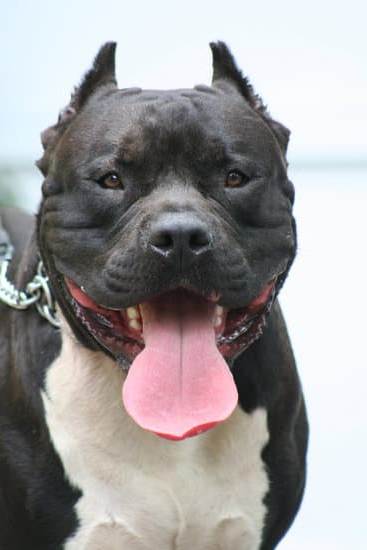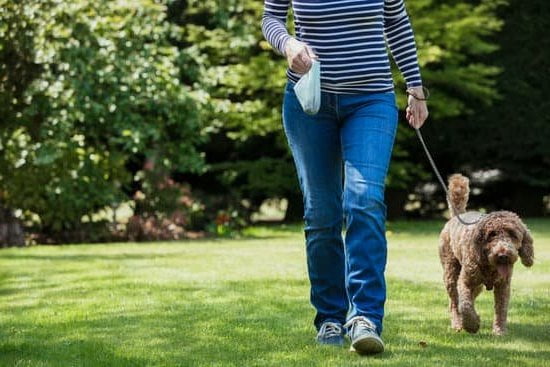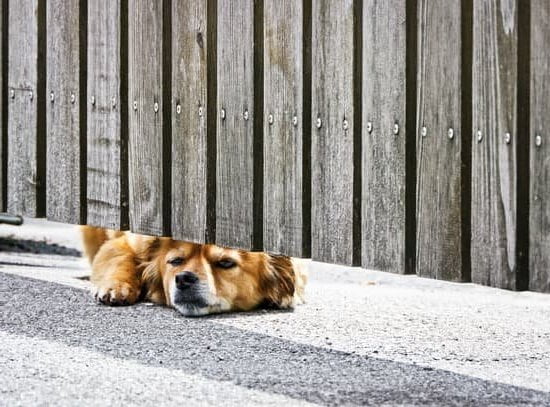Training a dog in the city can present unique challenges that are not typically encountered in more suburban or rural settings. From navigating crowded streets to dealing with noise and distractions, urban dog owners face a different set of obstacles when it comes to training their furry companions. In this article, we will explore the specific challenges of training a dog in the city and provide valuable tips and techniques for successfully raising a well-behaved urban pup.
Many city-dwellers may assume that owning a dog in an urban environment is impractical, but with the right approach, it is entirely possible to train a dog to thrive in the hustle and bustle of city life. Whether you’re living in an apartment building or navigating busy sidewalks, there are strategies that can make training your dog in the city much more manageable.
From choosing the right breed for urban living to mastering essential commands and socializing your pup, this article will cover all aspects of training a dog in an urban environment.
In the following sections, we will discuss everything from crate and potty training tips for apartment living to leash training and walking etiquette in the city. We’ll also delve into advanced training techniques tailored specifically for urban dogs. By understanding the unique challenges of city living and implementing effective training methods, you can ensure that your canine companion becomes a well-behaved and happy member of urban society.
Choosing the Right Dog Breed for Urban Living
When it comes to training a dog in the city, choosing the right breed is crucial for a successful and harmonious urban living experience. Different dog breeds have varying needs and temperaments that may or may not be suitable for city life. Here are some factors to consider when choosing a dog breed for urban living:
Size and Energy Level
One of the most important considerations when selecting a dog breed for city living is its size and energy level. While larger, high-energy breeds may thrive in a spacious home with a backyard, smaller breeds or low-energy dogs are often more suitable for apartment living. Consider the amount of space you have available and how much exercise and mental stimulation you can provide for your furry companion.
Noise Sensitivity
City environments are often filled with loud noises from traffic, construction, and other urban activities. Some dogs may be more sensitive to these noises than others. Breeds that are known for being more tolerant of noise and able to adapt to an urban environment may be better suited for city living.
Tolerance of Crowds and Other Animals
The city is a bustling place with crowds of people and other animals around every corner. It’s important to choose a dog breed that is comfortable in crowded spaces and can socialize well with other dogs and people. Breeds that are known for their friendly and sociable nature may be ideal for urban living.
By carefully considering these factors when choosing a dog breed for city living, you can set yourself up for success when it comes to training your urban pup. Remember that each dog is an individual, so it’s essential to also consider your specific dog’s personality, needs, and temperament when making this decision.
Training your furry friend will be much easier if you select a breed that aligns with your lifestyle and fits well within the confines of city living. This will ensure both you and your pup have an enjoyable experience in the urban environment as you embark on this journey of
Essential Training Commands for City Dogs
When training a dog in the city, it is essential to start with the basics. Teaching your dog essential commands will not only help keep them safe in an urban environment, but also make your life as a pet owner much easier. Here are some important training commands for city dogs:
Sit
Teaching your dog to sit on command is one of the most basic and important commands. This command can help keep your dog calm and under control, especially in busy city settings. It’s also a great way to prevent jumping on strangers or other dogs.
Stay
The “stay” command is crucial for keeping your dog safe in a city environment. Whether you need to wait at a crosswalk, pay for something at a store, or simply want to enjoy an outdoor cafe without tying up your pup, teaching them the “stay” command is essential.
Come
The “come” command is vital for your dog’s safety, particularly when they are off-leash in a city setting. Being able to call your dog back to you can prevent them from running into traffic or getting into any dangerous situations.
Training your dog in the city requires patience and consistency. Using positive reinforcement techniques such as treats, praise, and toys can be extremely effective. With these essential commands mastered, you will have a well-behaved urban pup that you can safely enjoy outings with in the city.
Crate and Potty Training Tips for Apartment Living
Living in an apartment in the city presents unique challenges when it comes to training a dog, especially when it comes to crate and potty training. One of the first steps in crate training your dog is to make sure the crate is the right size – not too small that they feel cramped, but not too big that they can have accidents in one corner and sleep comfortably in another.
It’s important to introduce your dog to the crate slowly, making it a positive and comfortable space for them with treats and praise.
When it comes to potty training in an apartment setting, establishing a routine is key. Take your dog out first thing in the morning, after meals, before bed, and several times throughout the day. Be patient and consistent with your training, offering rewards and praise when they potty outside. If accidents happen inside, never punish your dog as this will only create anxiety around potty training.
It’s also important to consider hiring a dog walker if you work long hours or live in a building without easy outdoor access. A professional dog walker can help reinforce potty training and provide your pup with much-needed exercise during the day. With these tips and patience, you can successfully train a dog in the city, creating a happy living environment for both you and your furry friend.
Socializing Your Dog in an Urban Environment
When it comes to training a dog in the city, socialization is a crucial aspect that should not be overlooked. Socializing your dog in an urban environment can help prevent behavioral issues and ensure that your furry friend is comfortable and confident in various settings. Here are some tips on how to successfully socialize your dog in the city:
- Expose Your Dog to Different Environments: Introduce your dog to the sights and sounds of the city by taking them on walks in busy areas, visiting pet-friendly stores, or sitting in outdoor cafes. Exposing your dog to different environments will help them become accustomed to the hustle and bustle of city life.
- Arrange Playdates: Set up playdates with other dogs in the neighborhood or at a local dog park. Allowing your dog to interact with other canines will teach them important social skills and help them learn proper behavior when meeting new furry friends.
- Enroll in Obedience Classes: Consider enrolling your dog in obedience classes or group training sessions specifically designed for urban living. These classes can provide structured socialization opportunities while also reinforcing essential training commands.
In addition to these tips, it’s important to be patient and consistent with the socialization process. Every dog is unique, so it’s essential to tailor the socialization experiences to fit your dog’s individual needs and personality. By following these guidelines, you can help your urban pup become a well-adjusted and sociable member of the city community.
Overall, socializing your dog in an urban environment requires patience, consistency, and exposure to various situations. With proper socialization, you can set your furry friend up for success and ensure they are comfortable navigating the bustling city streets.
Leash Training and Walking Etiquette in the City
One of the most important aspects of training a dog in the city is leash training and teaching walking etiquette. With the hustle and bustle of urban life, it’s crucial for city dogs to be well-behaved when out for walks.
To start, choose a high-quality, comfortable leash that allows you to have control while still giving your dog some freedom to explore. It’s also essential to use a harness rather than a collar, as this can prevent injury to your dog’s neck if they pull on the leash.
When it comes to leash training, consistency is key. Start by teaching your dog to walk on a loose leash without pulling. Use positive reinforcement such as treats and praise to reward good behavior. If your dog starts pulling, stop walking and wait for them to come back to your side before continuing. With patience and consistent training, your city pup will learn how to walk politely on a leash.
Walking etiquette is also important when training a dog in the city. Teach your dog to yield to pedestrians, not jump or bark at passersby, and ignore distractions such as other dogs or loud noises. These skills are essential for making walks enjoyable for both you and your dog while navigating busy urban streets.
| Leash Training Tips | Walking Etiquette |
|---|---|
| Use positive reinforcement for good behavior | Teach yielding to pedestrians |
| Be consistent with training | Avoid jumping or barking at passersby |
| Choose a comfortable harness for control | Ignore distractions such as other dogs or loud noises |
Managing Distractions and Noise Sensitivity
Training a dog in the city comes with its own set of challenges, one of which is managing distractions and noise sensitivity. With so much activity and stimuli in urban environments, it’s important to teach your dog how to stay focused and calm amidst the hustle and bustle. Here are some tips to help you manage distractions and noise sensitivity while training your dog in the city:
- Patience and Consistency: Training a dog to deal with distractions takes time and patience. It’s important to be consistent with your training methods and practice regularly in various environments around the city.
- Desensitization Techniques: Gradually exposing your dog to different noises and distractions can help desensitize them over time. Start with low-level noises or minimal distractions, then gradually increase the level as your dog becomes more comfortable.
- Positive Reinforcement: Use positive reinforcement techniques such as treats, toys, and praise to reward your dog for staying calm and focused despite surrounding distractions. This will help them associate positive experiences with remaining composed in noisy environments.
In addition to these techniques, it’s also important to provide your dog with mental stimulation through activities such as puzzle toys, interactive games, and obedience training exercises. By keeping their mind engaged, you can help alleviate their sensitivity to noise and distractions while out in the city.
Remember that every dog is different, so it’s essential to tailor your training approach based on your individual pet’s needs. With patience, consistency, and the right training methods, you can help your urban pup become more confident and well-behaved in any city setting.
Utilizing Dog Parks and Urban Spaces for Training
Living in the city with a dog can pose some challenges, but there are also many opportunities for training and socialization in urban environments. One of the best resources for urban dog owners is the plethora of dog parks and urban spaces specifically designed for dogs to play, exercise, and interact with other canines. These areas provide valuable opportunities for training in real-world scenarios, helping your dog become well-adjusted to city life.
When utilizing dog parks and other urban spaces for training, it’s important to start with the basics. Practice essential commands such as sit, stay, come, and leave it in a controlled environment within the park. Gradually increase the level of distraction by practicing these commands around other dogs and people. This will help your dog learn to focus on you even amidst distractions – an essential skill for city living.
In addition to obedience training, dog parks can also be used for socialization. This is crucial for city dogs who will encounter many different people and animals during their daily outings. Allowing your dog to interact with other friendly dogs at the park can help build their confidence and reduce any potential aggression or fear towards unfamiliar animals. It’s important to monitor these interactions closely at first to ensure that they are positive experiences for your pup.
| Benefit of Utilizing Dog Parks | Tips for Making the Most of Urban Spaces |
|---|---|
| Opportunities for real-world training scenarios | Start with basic commands in a controlled environment |
| Socialization with other dogs | Monitor interactions closely at first to ensure positive experiences |
Advanced Training Techniques for City Dogs
Training a dog in the city requires more than just basic commands and leash etiquette. To ensure your urban pup is well-behaved and adaptable to the city environment, it’s essential to incorporate advanced training techniques into their routine. Here are some valuable tips on how to train a dog in the city using advanced methods.
One effective technique for training a dog in the city is desensitization. This involves gradually exposing your dog to various stimuli commonly found in urban environments, such as loud noises, crowds, and other animals. By starting with low-intensity exposure and gradually increasing the level of stimulus, you can help your dog become more resilient and less reactive in these situations.
Another important aspect of advanced training for city dogs is off-leash reliability. While it’s crucial for dogs to have good leash manners in the city, there are often opportunities for off-leash play and exercise in designated areas like dog parks. Training your dog to respond reliably to verbal commands even when off-leash can provide them with more freedom while still maintaining control in urban settings.
In addition, scent work and mental stimulation can be highly beneficial for urban dogs. Engaging your dog’s sense of smell through activities like scent trails or nose work not only provides mental enrichment but also helps them focus and stay calm amidst the hustle and bustle of city life. Integrating these advanced training techniques into your city dog’s routine can greatly enhance their adaptability and behavior in an urban environment.
Overall, implementing advanced training techniques such as desensitization, off-leash reliability, and mental stimulation can significantly contribute to your dog’s success and happiness in the city. By investing time and effort into these methods, you can enjoy a well-behaved urban pup that thrives in diverse city surroundings.
Conclusion
In conclusion, training a dog in the city may present unique challenges, but with the right approach and dedication, it is entirely possible to enjoy the companionship of a well-behaved urban pup. By carefully selecting the appropriate breed for urban living, focusing on essential training commands, and implementing crate and potty training tips for apartment living, owners can set their dogs up for success in an urban environment.
Additionally, prioritizing socialization, leash training, and managing distractions and noise sensitivity are crucial components of a comprehensive city dog training regimen.
It is essential to remember that consistency and patience are key when it comes to training a dog in the city. Utilizing urban spaces such as dog parks for training and implementing advanced techniques as needed can further enhance a dog’s behavior in an urban setting. By following these guidelines and being proactive in addressing any behavioral issues that may arise, owners can ensure that their urban pup becomes a well-adjusted and obedient companion.
Ultimately, while training a dog in the city may require extra effort and attention to detail, the rewards of having a well-behaved urban pup are immeasurable. With dedication and knowledge about how to train a dog in the city, owners can build strong bonds with their beloved pets while fostering positive relationships within their community.
Frequently Asked Questions
How Can I Help My Dog Adjust to the City?
Helping your dog adjust to city life involves gradually exposing them to the sights, sounds, and smells of urban environments. Start with short walks or visits to quieter areas before gradually increasing the exposure to busier streets.
How Do You Train a Dog to Pee in the City?
Training a dog to pee in the city involves establishing a consistent routine for potty breaks, taking them to designated potty spots, and reinforcing good behavior with positive reinforcement. It’s important to be patient and understanding during this process.
How Do You Train a Dog to Behave in Public?
Training a dog to behave in public requires teaching them basic obedience commands like sit, stay, and heel. Practice these commands in various public settings, gradually increasing distractions to help your dog learn to focus and listen even in busy environments.

Welcome to the blog! I am a professional dog trainer and have been working with dogs for many years. In this blog, I will be discussing various topics related to dog training, including tips, tricks, and advice. I hope you find this information helpful and informative. Thanks for reading!





